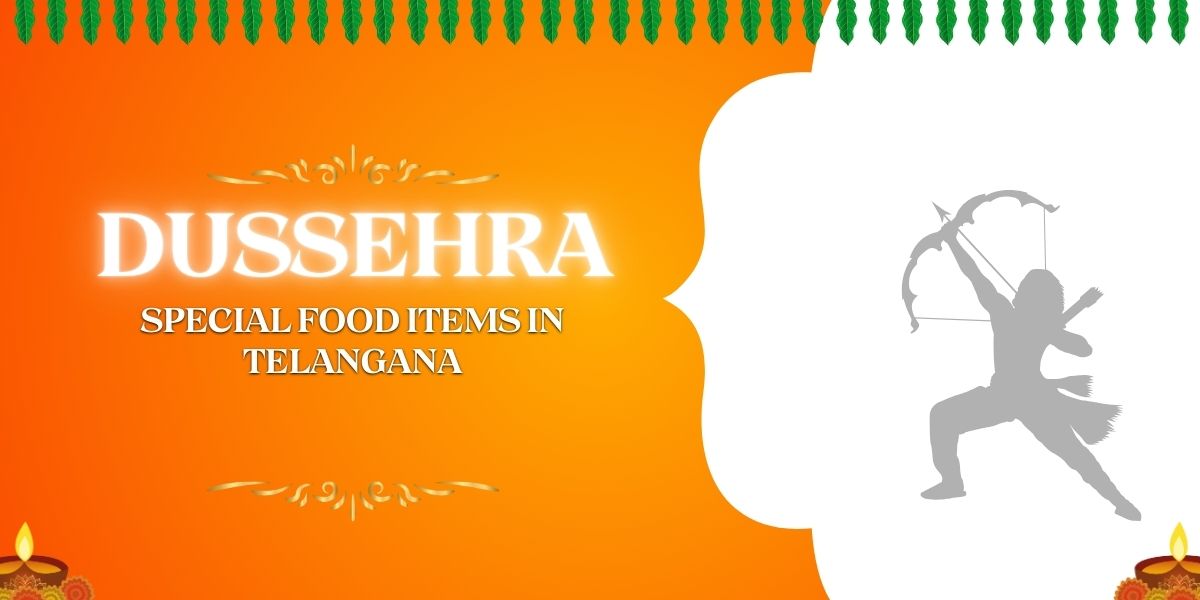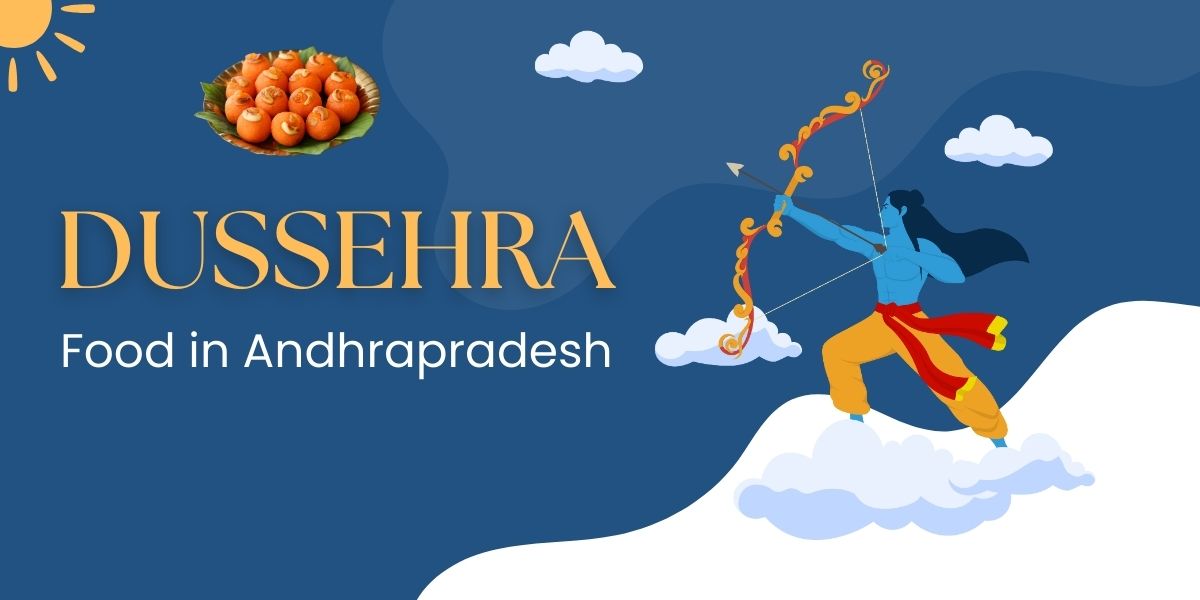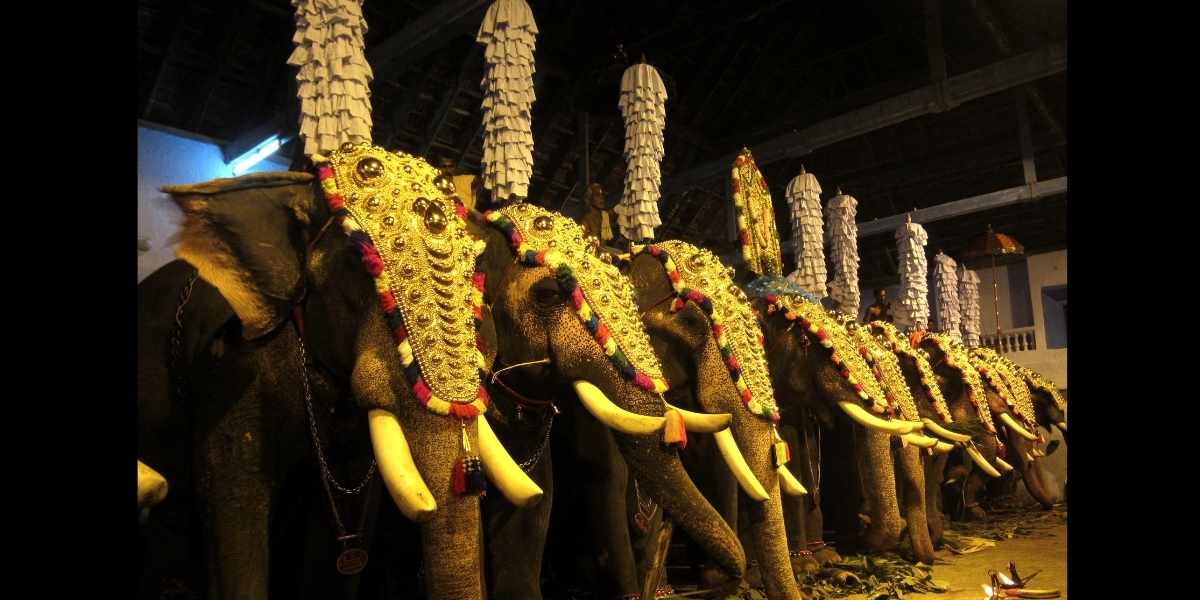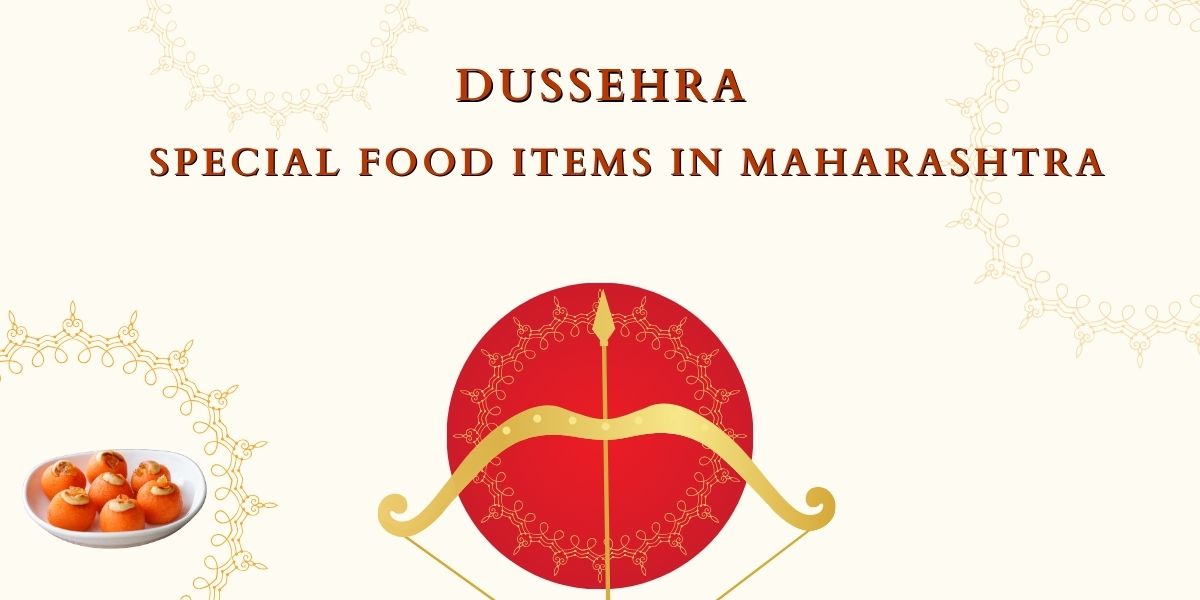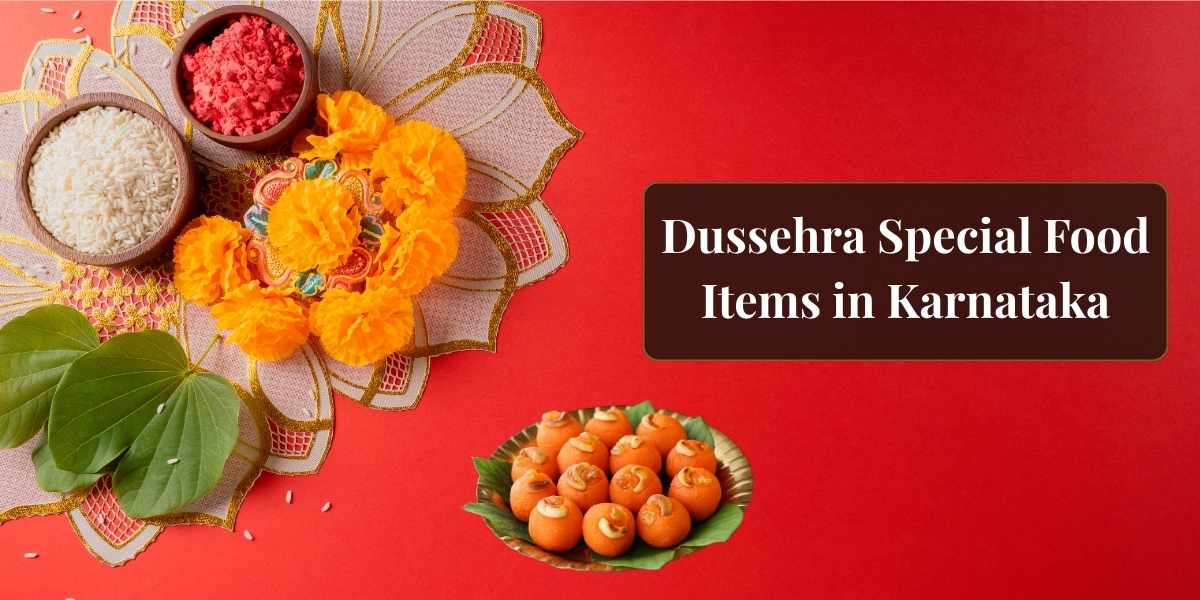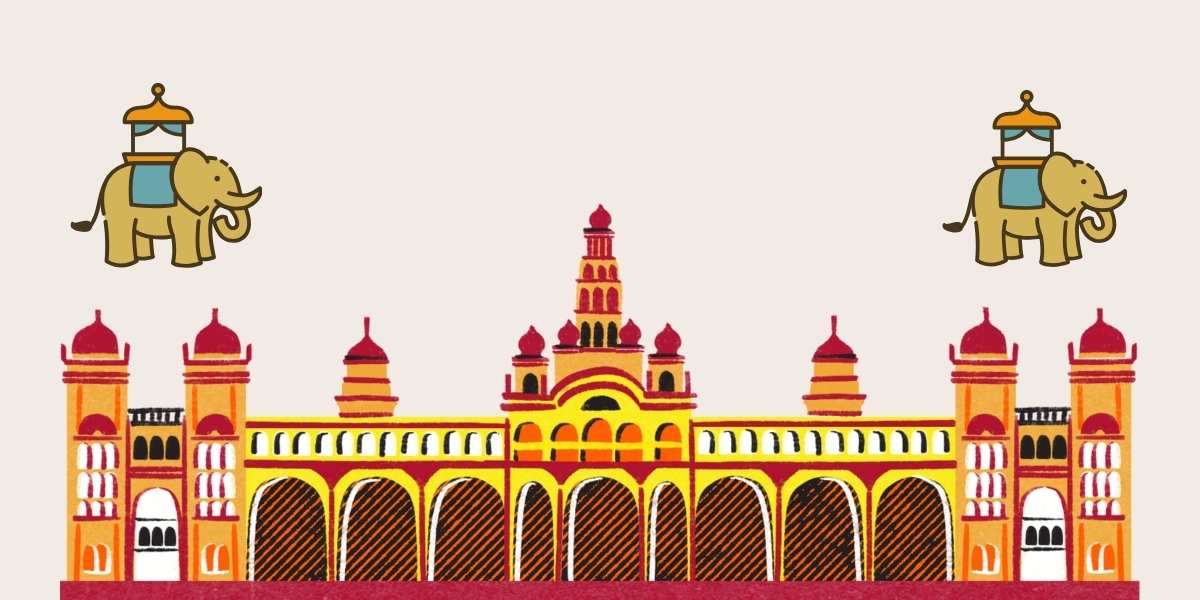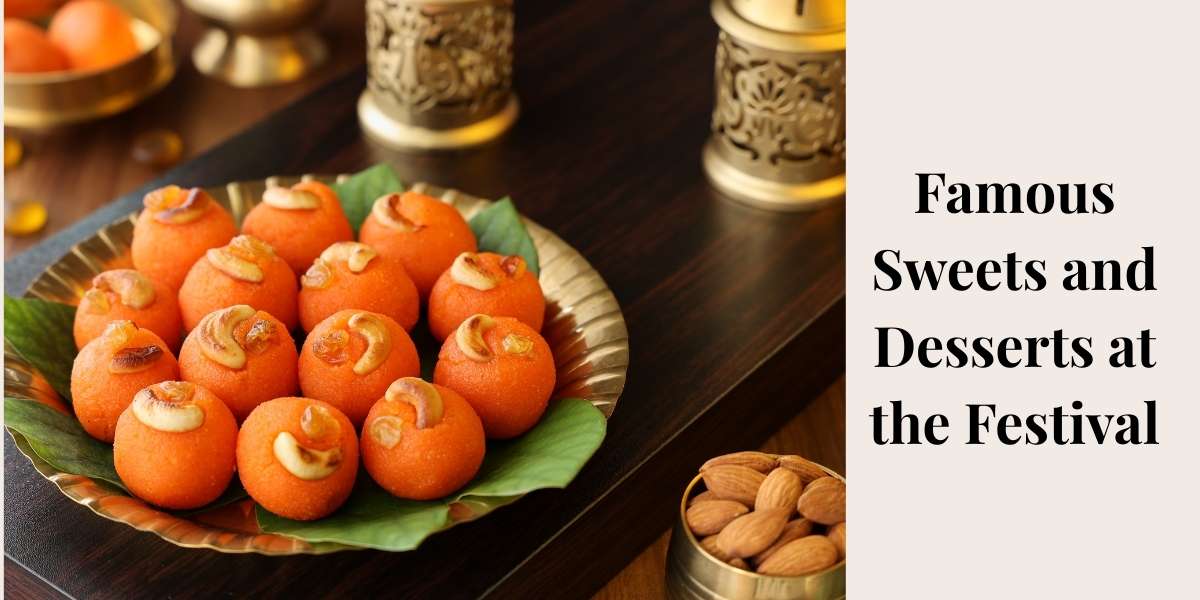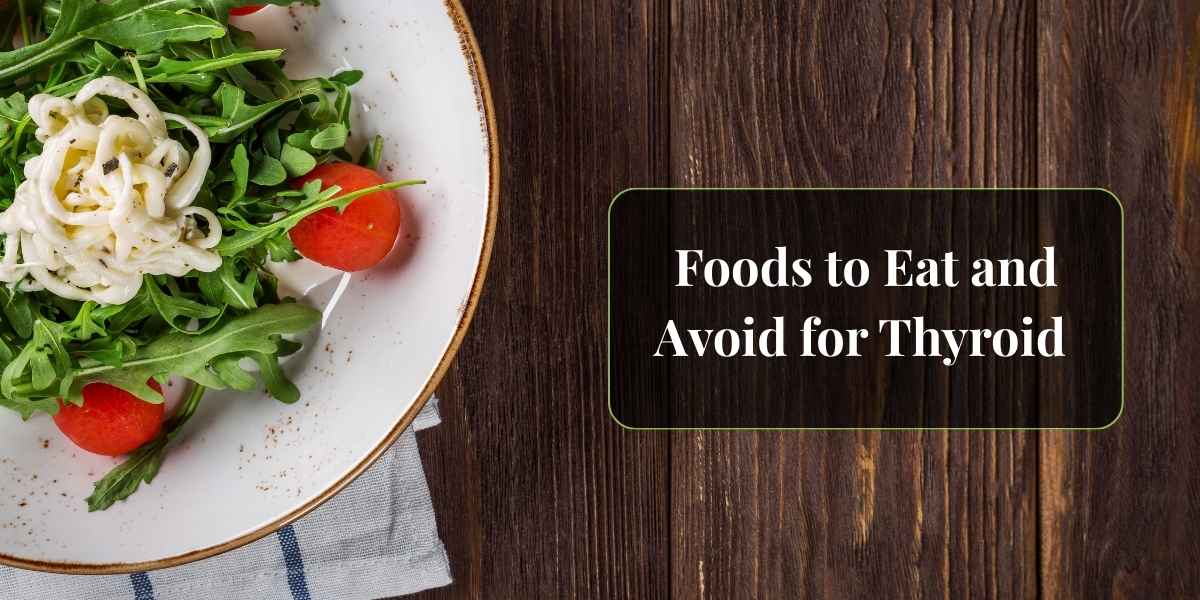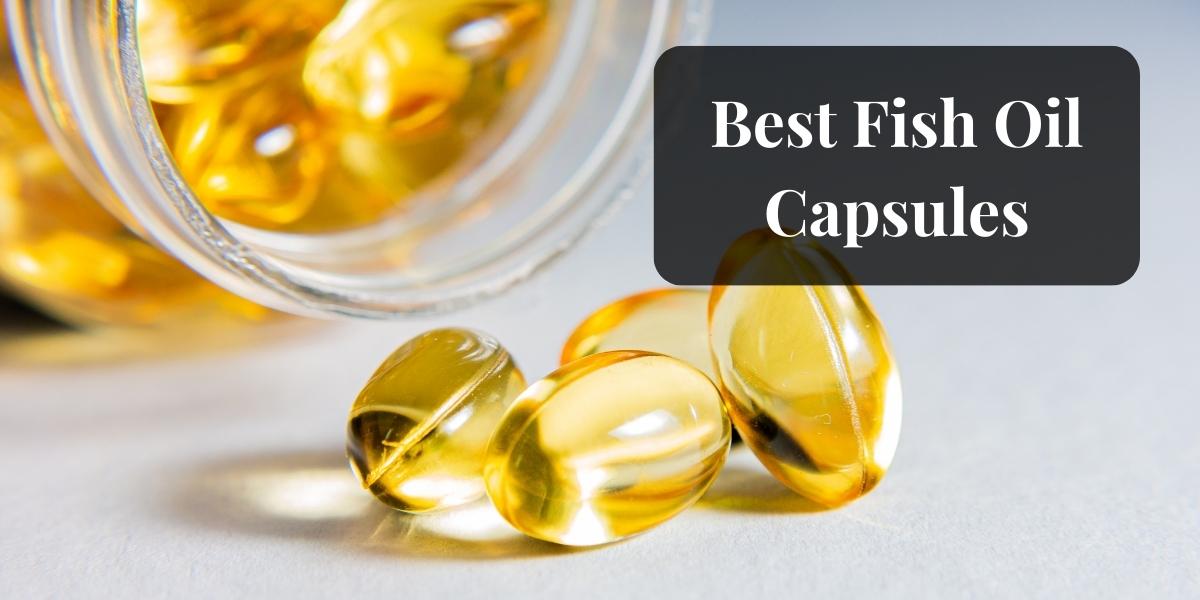Dussehra, or Vijayadashami, is one of Telangana’s most celebrated and meaningful festivals, symbolizing the timeless triumph of good over evil. The state marks it with devotion, enthusiasm, and joy—temples glow with lights, streets echo with music and grand processions, and homes are adorned with colorful rangolis, flowers, and festive decorations. Families come together to celebrate, and food takes center stage, especially the Dussehra Special Food Items in Telangana, which carry not just flavor but also deep cultural stories and cherished memories.
This blog takes you on a flavorful journey into the culinary side of Dussehra in Telangana, highlighting both the spiritual significance and the joy of shared meals. From classic vegetarian dishes passed down through generations to creative modern recipes inspired by platforms like Hebbars Kitchen, it showcases how food becomes a powerful symbol of togetherness, tradition, and celebration during this vibrant festival.
Significance of Dussehra in Telangana
Dussehra is celebrated in Telangana with immense devotion and enthusiasm, carrying profound cultural and spiritual meaning for the people of the state. It marks the joyful conclusion of the nine-day Navaratri festival and is observed with grandeur in temples, communities, and homes. For many families, the festival represents a fresh start — the end of the agricultural season and the welcoming of new ventures, symbolizing prosperity, growth, and renewal. It is a time when prayers for strength and success are offered, and communities come together to celebrate shared traditions.
Key Highlights:
- Joyful conclusion of the nine-day Navaratri festival
- Symbolizes prosperity, growth, and renewal
- Represents a fresh start and new ventures
- Communities unite through prayers and celebrations
Also Read – Dussehra Food in Andhra Pradesh
Traditional Dussehra Special Food Items in Telangana (Top 10 Food Items)
Telangana cuisine is celebrated for its bold, robust flavors, rich use of spices, and rustic authenticity that reflects the region’s heritage. During the festival of Dussehra, preparations for traditional dishes fill kitchens across homes, spreading enticing aromas that evoke a strong sense of nostalgia and cultural pride. These special foods perfectly capture the spirit of the festival and offer a delicious way to connect with Telangana’s culinary traditions. The festive menu is thoughtfully crafted, using local ingredients that highlight the agrarian roots of the region, with recipes passed down through generations. Each dish tells a story, symbolizing prosperity, togetherness, and the joy of celebrating victory, making the food an indispensable part of Telangana’s vibrant Dussehra celebrations.
| Dish | What it is | Why it’s special |
| Pulihora (Tamarind Rice) | Rice mixed with tamarind, spices, and curry leaves. |
Offered to goddess; brings festive joy.
|
| Garelu (Medu Vada) | Crispy fried urad dal doughnuts. |
Common festival snack; loved with chutney.
|
| Payasam (Kheer) | Sweet milk pudding with rice/vermicelli. |
Must-have dessert; adds comfort and tradition.
|
| Sakinalu | Crunchy rice flour spirals with sesame and carom. |
Shared with family; symbol of prosperity.
|
| Boorelu | Sweet dumplings with jaggery and dal filling. |
Popular festive sweet; golden and tasty.
|
| Pappu (Dal) | Thick lentil curry with rice and ghee. |
Everyday favorite; many variations for Dussehra.
|
| Kodi Pulusu (Chicken Curry) | Spicy country-style chicken curry. |
Festive non-veg dish; full of flavor.
|
| Gutti Vankaya Kura | Brinjal stuffed with spice mix and cooked. |
Rich vegetarian curry; goes with rice.
|
| Jonna Roti with Pachhi Pulusu | Sorghum flatbread with tangy tamarind curry. |
Rustic dish; shows Telangana’s farming roots.
|
| Ariselu | Sweet made with rice flour, jaggery, sesame. |
Traditional festive sweet; chewy and joyful.
|
Pulihora (Tamarind Rice)
Pulihora stands out as one of Telangana’s most beloved festive dishes, cherished for its tangy and mildly spicy flavor profile. It is prepared by combining cooked rice with a tangy tamarind pulp, fresh curry leaves, turmeric, roasted sesame seeds, and a carefully tempered blend of spices. This vibrant dish is traditionally offered as naivedyam (food offering) to the goddess before being served to family and guests, symbolizing auspiciousness and celebration.
Garelu (Medu Vada)
Garelu, also known as Medu Vada, are crisp, deep-fried lentil doughnuts made from soaked and ground urad dal. These fritters are a staple during auspicious occasions like Dussehra, typically served hot alongside coconut chutney or ginger chutney. Their light yet crunchy texture makes them a much-loved component of the festive lunch spread.
Payasam (Kheer)
Payasam is a creamy, sweet pudding that holds a special place in Dussehra celebrations. Made with milk, rice or vermicelli, and sweetened with jaggery or sugar, it is delicately flavored with cardamom and enriched with ghee. This wholesome dessert is considered essential for festive meals, offering both comfort and tradition in every spoonful.
Sakinalu
Sakinalu are traditional crunchy, spiral-shaped snacks made from rice flour and seasoned generously with sesame seeds and carom seeds. They are skillfully prepared during festival times and often stored for several days, serving as both a delicious treat and a symbol of prosperity and abundance shared among family and friends.
Boorelu
Boorelu are delightful sweet dumplings, filled with a rich mixture of jaggery and chana dal, coated with a rice and urad dal batter, and deep-fried to a golden finish. These sweets are especially favored during Dussehra and other religious festivals, celebrated for their perfect balance of sweetness and texture.
Pappu (Dal)
Pappu, or dal, holds a special place in Telangana’s festive meals. The traditional version is thick and hearty, usually made with toor dal or moong dal. It’s a must-have alongside steamed rice, often served with a generous drizzle of ghee that brings out its rich flavor beautifully. What makes pappu interesting is its many variations — tomato pappu adds a tangy zest, spinach pappu gives it a healthy green boost, and mango pappu offers a surprising sweet and sour twist. These different takes highlight the creativity in Telangana kitchens, turning simple lentils into soul-satisfying dishes.
Kodi Pulusu (Spicy Chicken Curry)
For non-vegetarian families, kodi pulusu holds a special place in the Dussehra feast. This country-style chicken curry is slow-cooked with a blend of fresh onions, tangy tomatoes, tamarind, and an aromatic mix of local spices, resulting in a deeply flavorful and spicy dish. Its earthy, robust taste complements the festive spread and is eagerly awaited by many during the celebrations.
Gutti Vankaya Kura (Stuffed Brinjal Curry)
Gutti Vankaya Kura is a rich, comforting curry featuring small brinjals stuffed with a finely ground mixture of roasted spices, coconut, and peanuts. The stuffed eggplants are then simmered gently to absorb the flavors, creating a tender and savory delicacy. This dish is commonly paired with steamed rice and ghee during festive meals, adding an elegant vegetarian option to the table.
Jonna Roti with Pachhi Pulusu
Jonna roti, a traditional sorghum flatbread, paired with pachhi pulusu—a tangy, raw tamarind curry—is a rustic delicacy deeply rooted in Telangana’s agrarian food culture. This combination showcases simplicity and earthiness, often included in festive spreads to honor the region’s agricultural heritage and to offer a wholesome, nutritious option that complements richer dishes.
Ariselu
Ariselu is a beloved traditional sweet made from rice flour and jaggery with sesame seeds, prepared especially for major festivals like Dussehra. These deep-fried sweets are cherished for their chewy texture and mild sweetness, often made in advance and stored for several days. Ariselu not only delights the palate but also symbolizes the abundance and joy of the festive season.
These ten dishes truly capture the essence of Telangana’s festive cuisine, blending bold, aromatic flavors with wholesome ingredients and profound cultural significance.
Dussehra Special Food Items in Telangana Veg
Telangana cuisine offers a rich mix of vegetarian and non-vegetarian dishes, but on Dussehra day, meals are predominantly vegetarian, especially for the offerings made to the goddess. Some of the popular vegetarian dishes traditionally prepared on Vijayadashami include:
- Plain Rice with Ghee – Serving as the foundation of the festive meal, plain rice is accompanied by dal and a variety of curries, with a generous spoonful of ghee adding richness.
- Tomato Pappu – This tangy tomato dal is tempered with garlic, curry leaves, and mustard seeds, creating a flavorful dish that complements the rice perfectly.
- Chikkudukaya Fry – Broad beans stir-fried with a blend of spices and coconut, adding texture and flavor to the festive spread.
- Beerakaya Pachadi – A refreshing ridge gourd chutney made with roasted green chilies and garlic, offering a balance to the heavier dishes.
- Vankaya Pulusu – Brinjal cooked in a tamarind-based stew that balances sweet, sour, and spicy notes, making it essential in Dussehra meals.
- Dondakaya Vepudu – Crispy fried ivy gourd seasoned with aromatic curry leaves and sesame seeds, providing a delightful crunch.
- Majjiga Pulusu – A spiced buttermilk-based curry featuring vegetables such as ash gourd or bottle gourd, delivering a tangy and cooling effect.
- Cabbage Poriyal – Lightly stir-fried cabbage with grated coconut, bringing freshness and subtle sweetness.
- Sundal (Senagalu Guggillu) – Steamed chickpeas sautéed with mustard seeds, curry leaves, and grated coconut, a nutritious and tasty side dish.
- Curd Rice (Perugannam) – Creamy yogurt rice served as a soothing end to the meal, helping balance the array of flavors on the plate.
These vegetarian offerings are traditionally served on banana leaves as part of an elaborate festive thali, often concluded with sweets such as payasam, boorelu, or ariselu to complete the celebratory feast.
Dussehra Special Food Items in Telangana Hebbars Kitchen
Many families nowadays turn to popular culinary platforms like Hebbars Kitchen for quick, authentic recipes to prepare their festive meals. Some Dussehra-special recipes inspired by Hebbars Kitchen are commonly made in Telangana households, combining tradition with convenience to suit modern lifestyles.
- Andhra Pulihora – Their version of tamarind rice is quick to prepare and perfectly balanced in taste, maintaining the tangy and spicy flavors essential to this festive dish.
- Medu Vada (Garelu) – Hebbars Kitchen provides an easy, foolproof technique for making crispy vadas that avoid excessive oil absorption, ensuring a light yet crunchy texture.
- Bobbatlu / Obbattu – Sweet flatbreads stuffed with a luscious filling of chana dal and jaggery, cherished as a traditional festive treat.
- Sakkarai Pongal – A sweet pongal made with rice, moong dal, jaggery, and ghee, commonly prepared as naivedyam (offering) during Dussehra celebrations.
- Coconut Ladoo – A simple and quick festive sweet made by blending grated coconut, condensed milk, and fragrant cardamom.
- Rava Kesari – A semolina-based dessert similar to kesari bath, delicately flavored with saffron and enriched with ghee for a luscious taste.
- Vegetable Sambar – A hearty, lentil-based stew cooked with tamarind and fresh vegetables, adding depth and wholesomeness to the meal.
- Gutti Vankaya Curry – This stuffed brinjal curry features a traditional roasted spice paste that infuses the dish with rich flavors, often paired with rice.
- Curd Rice – A cooling and refreshing dish that balances the spicier elements of the festive spread, making it a favorite for many households.
- Lemon Rice (Chitrannam) – A tangy yellow rice preparation flavored with fresh lemon juice, curry leaves, and green chilies, offering a bright and zesty note to the meal.
These recipes from Hebbars Kitchen marry traditional Telangana flavors with practical cooking approaches, enabling busy families to create authentic and flavorful festive meals while preserving the cultural richness of Dussehra cuisine.
Conclusion for Dussehra Special Food Items in Telangana
Dussehra in Telangana is much more than a religious observance—it is a vibrant cultural celebration where food takes center stage as the heart of the festivities. The wide variety of dishes prepared during this auspicious season beautifully reflects the region’s rich agricultural heritage, deep-rooted culinary traditions, and strong community spirit that binds people together. From the tangy and aromatic pulihora to the crispy, savory garelu, and from the sweet, melt-in-the-mouth ariselu to the creamy, comforting payasam, every dish speaks volumes about Telangana’s heritage and heartfelt devotion.
The age-old tradition of sharing festive meals not only fills homes with delicious aromas but also strengthens the bonds within families and communities alike. As homes echo with laughter, prayers, and the inviting scent of traditional food, Dussehra transforms into a holistic experience, blending spirituality with culture and togetherness in a remarkable way. For visitors fortunate enough to witness Telangana’s Dussehra celebrations, exploring its unique food scene is a journey into the very soul of the state’s festive spirit—an experience cherished for a lifetime, rich in flavors, stories, and heartfelt connections.
FAQs for Dussehra Special Food Items in Telangana
Q1. What is the significance of Dussehra in Telangana?
Ans:- Dussehra in Telangana symbolizes the victory of good over evil and closely coincides with the Bathukamma festival. It represents devotion, prosperity, and the preservation of cultural heritage, uniting people through rituals and vibrant celebrations.
Q2. What are the most popular Dussehra dishes in Telangana?
Ans:- Some of the most celebrated festive dishes include pulihora (tamarind rice), crispy garelu, sweet payasam, boorelu, crunchy sakinalu, and traditional ariselu, all of which hold a special place in the regional cuisine during Dussehra.
Q3. Are Dussehra meals vegetarian in Telangana?
Ans:- Yes, on Vijayadashami, most households prepare purely vegetarian meals as offerings to the goddess. However, non-vegetarian dishes are commonly prepared on days surrounding the festival.
Q4. What sweets are made during Dussehra in Telangana?
Ans:- Popular sweets prepared during Dussehra include ariselu, boorelu, payasam, rava ladoos, and bobbatlu, each reflecting the rich culinary traditions and festive spirit of the region.
Q5. What ingredients are commonly used in Dussehra dishes?
Ans:- Key ingredients found in Dussehra delicacies are rice, lentils, tamarind, jaggery, ghee, coconut, and seasonal vegetables, which together create the bold and wholesome flavors characteristic of Telangana’s festive meals.
Q6. Are there easy versions of traditional dishes available online?
Ans:- Yes, platforms like Hebbars Kitchen provide simplified and quick versions of traditional Dussehra recipes, making it convenient for busy households to prepare authentic festive dishes.
Q7. How is food connected to Bathukamma celebrations?
Ans:- During Bathukamma, women gather to offer floral arrangements to the goddess and later come together to share festive foods such as pulihora, garelu, and various sweets, reinforcing community bonds and cultural traditions.

